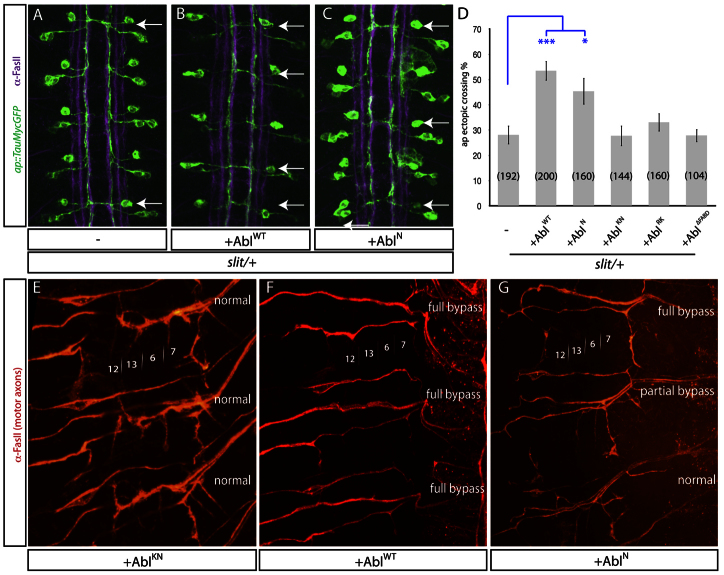Fig. 6.
The Abl N terminus is sufficient to inhibit multiple guidance pathways. (A-C) Stage 17 slit/+ embryos expressing TauMycGFP and the indicated transgenes in ipsilateral apterous neurons under control of apGal4. Five abdominal segments are shown. apterous axons are visualized with anti-GFP (green). FasII-positive ipsilateral axons are in magenta. Anterior is up. (A) slit/+ embryo. Occasional ectopic crossing occurs (arrows). (B) slit/+ embryo expressing AblWTGFP. Ectopic crossing (arrows) is significantly enhanced. (C) slit/+ embryo expressing AblNGFP. Ectopic crossing (arrows) is enhanced. (D) Quantification of ap ectopic crossing defects. Expression of AblWTGFP and AblNGFP results in a similarly penetrant phenotype. Error bars indicate s.e.m. Number of segments scored is shown in parentheses. *P<0.05, ***P<0.001. (E-G) Stage 17 embryos expressing the indicated Abl-GFP fusions under control of pan-neural Elav-Gal4. Motor axons are visualized with anti-FasII. Three segments are shown. Anterior is up. Approximate location of muscle clefts and muscle numbers are indicated. (E) AblKNGFP has no effect when overexpressed. All three muscle clefts are properly innervated. (F) AblWTGFP expression results in full ISNb bypass phenotype. (G) AblNGFP expression generates ISNb bypass, although to a lesser degree than AblWTGFP.

